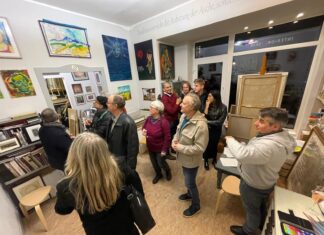By Alin K. Gregorian
Mirror-Spectator Staff
WATERTOWN — A new film by history buff Arsen Hakobyan of Armenia intends to put into perspective Armenia’s influence on Europe, both in terms of export- ing Christianity, as well as exporting its church architecture and numerous saints.
The film, shot on location in Armenia as well as in Georgia and several European countries, gives as examples churches in Europe that were built heavily influenced by the Armenian church structure — most perfectly and earliest executed in Echmiazdin and Bagaran. Among those churches is San Satiro in Milan, the origi- nal structure of which was based on the seventh-century Bagaran church.
The DVD can be watched in Armenian, English, Russian or French.
The film also spends time on the report- ed travels by Renaissance genius Leonardo DaVinci in Cilicia, specifically around the Taurus Mountains. According to his Codex Atlanticus, housed in the Ambrosian Library in Milan, he spent some time in Cilicia in the 1480s, where he witnessed an earthquake in Erzinga. He had reportedly gone there at the behest of the Sacred Sultan of Egypt. He sketched many faces, as well as the topog- raphy of the region.








